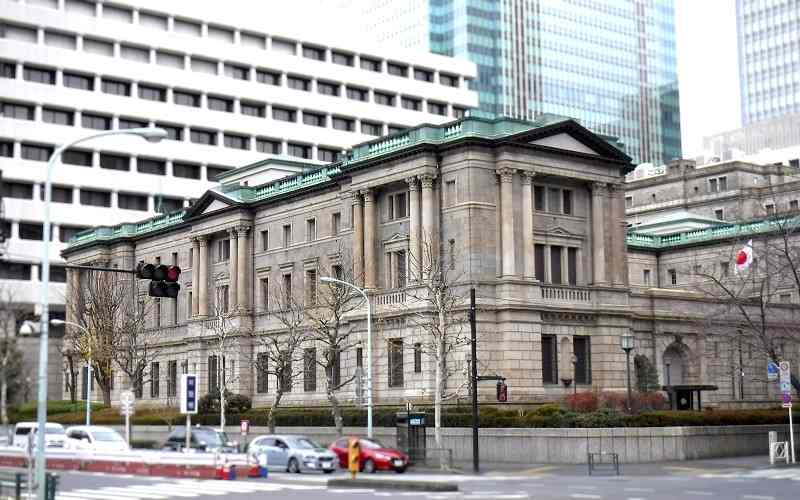

TOKYO (Jiji Press) — Bank of Japan policymakers at their meeting in January discussed proactively its monetary policy management after the end of the central bank’s negative interest rate policy, minutes of the meeting showed Monday.
The BOJ’s Policy Board decided last week to end the policy of applying an interest rate of minus 0.1% on part of commercial financial institutions’ current account deposits at the central bank, marking its first interest rate hike in about 17 years.
The board also decided to scrap the yield curve control regime, which called for guiding the yields on 10-year Japanese government bonds to around zero.
As to the BOJ’s new short-term interest rate target after the termination of the negative rate policy, one Policy Board member said at the Jan. 22-23 meeting that the bank would encourage the unsecured overnight call rate, the key short-term interbank lending rate, to move “in a range of zero to 0.1%,” the minutes showed.
Some members said that the BOJ would continue JGB purchases regardless of whether the yield curve control framework is terminated, indicating that a system to prevent a spike in long-term interest rates should be in place after the abolition of the yield curve control, according to the minutes.
At last week’s meeting, the Policy Board decided to nudge the unsecured overnight call rate to around zero to 0.1% and continue buying massive amounts of JGBs for the time being, while scrapping the yield curve control framework, including the application of the negative interest rate on some current account deposits. The yield curve control was the pillar of the BOJ’s ultraeasy monetary policy.
At the Jan. 22-23 meeting, Policy Board members agreed on the importance of the BOJ organizing its “basic thinking” on points it should take into account when changing its policy and on its policy conduct thereafter, in light of the growing likelihood of the central bank’s 2% consumer inflation target being met, the minutes showed.
Many members agreed that accommodative financial conditions would “highly likely” be maintained after the BOJ takes policy actions such as ending the negative rate policy, according to the minutes.
